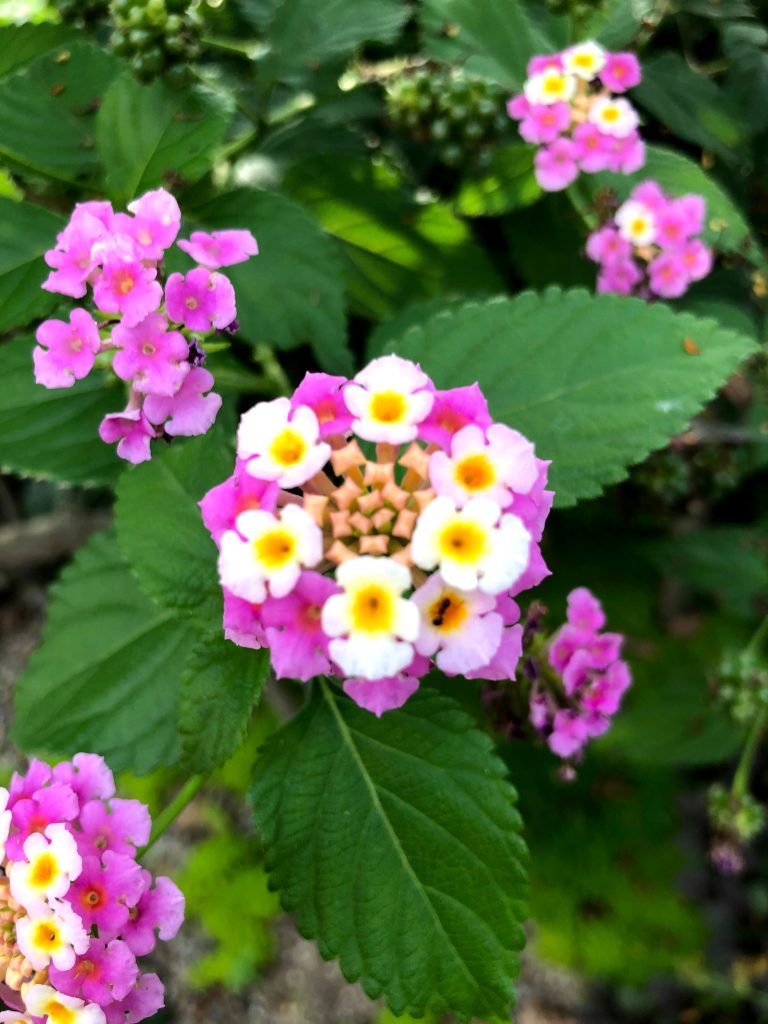
Lantana is starting to bloom all at once. This flower is undoubtedly a subject of the wanted worldwide. It has been designated as one of the top 100 invasive alien species in the world. Especially in tropical to subtropical climates, if not properly managed, it spreads everywhere through self-seeding, and in such climates, it is avoided as a “flower that should not be planted.” In temperate climates like Japan, where there are cold seasons, it withers in autumn, so it is not as serious an invasive species as in tropical regions, and it is even planted in gardens as an ornamental plant. Indeed, Lantana has recently become conspicuous. Even with a little soil, it spontaneously blooms alongside roadsides and stone walls. Lantana produces side shoots one after another from early summer to autumn and grows horizontally. Gradually, the flowers bloom, with numerous small flowers of about 1mm square crowded together in one place. As it continues to bloom, you can enjoy not only a single color but also a gradation of colors. That’s why it is called “Shichihenge” in Japanese, meaning “seven transformations.
ランタナが一斉に咲き始めています。この花、世界ではれっきとしたお尋ねもの。世界の侵略的外来種ワースト100に選定されているんです。特に熱帯~亜熱帯気候の土地では、よほどきちんと管理してないとそこかしこにこぼれ種で増えてしまい、そうした気候の土地では「植えてはいけない花」と忌避されています。日本のような寒い季節がある温帯気候の土地だと、秋季には枯れてしまうので、熱帯地方ほど深刻な侵略種ではないためか、園芸植物として庭にも植えられているほどです。確かにランタナはここ最近急速に目につく様になりました。道路脇や石垣など少し土があるといつの間にか一群れのランタナが咲いています。ランタナは初夏から秋まで次々とわき芽を増やし、横に広がって成長していきます。花は1mm四方の小さな花が一か所にいくつもひしめき合って徐々に花が咲ます。咲き進むたびに花色が一色だけではなく、グラデーションのような花色が楽しめます。和名で「七変化」と呼ばれる所以です。
